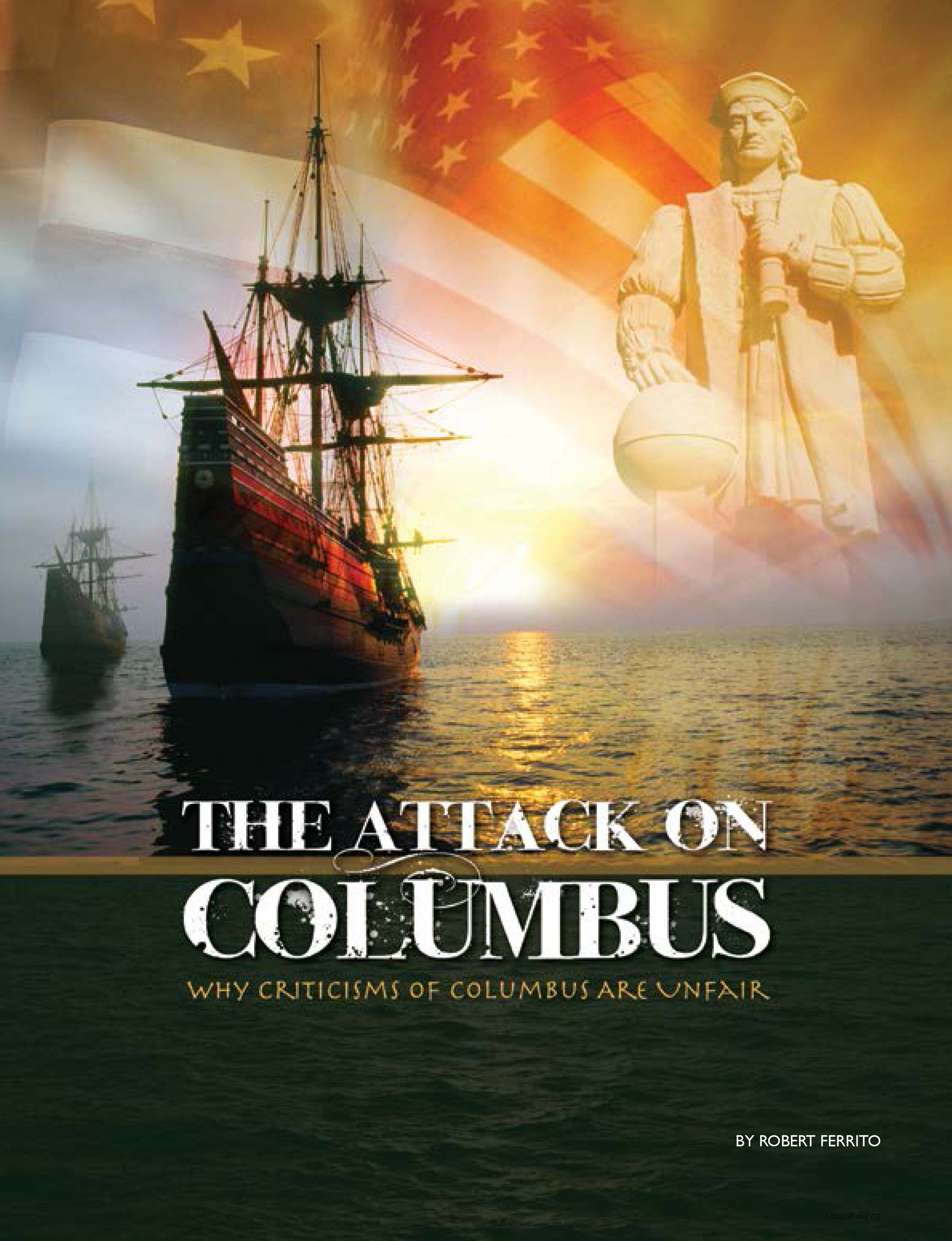
 |
|
|
The Attack on
Columbus by
Robert Ferrito |
|
|
|
 |
|
|
The
Commission for Social Justice is the
anti-defamation arm of the Order Sons and
Daughters of Italy in America. The commission
has, throughout the years, engaged in a wide
variety of activities geared towards
accomplishing its twin goals of promoting a
positive image of Italian Americans and
maintaining a strong conviction in fighting
bias, bigotry, and defamation. The United States Government symbolically chose Columbus Day of 1942 as the day to formally remove the “enemy alien” designation that was applied to Italian immigrants during World War II.
|
children of those early Italian
Americans constitute the nation’s fifth-largest
ethnic group. Italian Americans were declared a
protected minority by Federal Judge Constance
Motley Baker in a lawsuit brought against the
City University of New York State (Scelsa v.
CUNY). • Columbus introduced the principles of compass variation (the variation at any point of the Earth’s surface between the magnetic north and true north). • Columbus’s voyages marked the end of thousands of years of isolation between the Western Hemisphere and the rest of the world.
The Columbus statue that was vandalized in Providence, Rhode Island. In multiple cities and towns across the country, Columbus statues were vandalized. One was beheaded in the North End of Boston, Massachusetts, while others were torn down and thrown into bodies of water in Richmond, Virginia, and Baltimore, Maryland. |
| ITALIAN AMERICA FALL 2020 23 | |
|
_______________________________________________________________________________ |
|
|
An examination of the historical
record shows he was not guilty of many of the
things his modern detractors claim: Columbus Day was first proclaimed a national celebration by President Benjamin Harrison in response to the 11 Italian immigrants lynched in New Orleans in 1891—the largest lynching in United States history. • Columbus did not commit genocide. No one knows exactly how many people were in the Western Hemisphere when the Europeans arrived. Many researchers believe the number to be around 40 million. Columbus made four voyages to the Caribbean in a 12-year period (1492-1504), spending from only seven months to two years and nine months (including the year he was shipwrecked on his fourth voyage). While there was armed conflict with the Spanish who came with Columbus and stayed after he left, there is no evidence of the kind of mass slaughter that was practiced later in Central and South America. • New medical research on pre-Columbian mummies in Peru, Chile, and remote areas far from the early European colonies reveals that tuberculosis, long thought European in origin, was present among the Native American tribes before the arrival of Columbus. |

A statue of Cristopher Columbus in Santa
Margherita The Commission for Social
Justice remains determined to continue the
preservation of the memory of Christopher
Columbus and the significant part he played in
the history of the Americas. Robert Ferrito is President of the Commission for Social Justice of the Order Sons and Daughters of Italy in America. See Page 33 of this issue for how you can help the Commission for Social Justice and President Robert Ferrito defend and protect Columbus’s statues and legacy. |
|
FALL 2020 24 ITALIAN AMERICA |
|
|
the truth about christopher columbus |
|